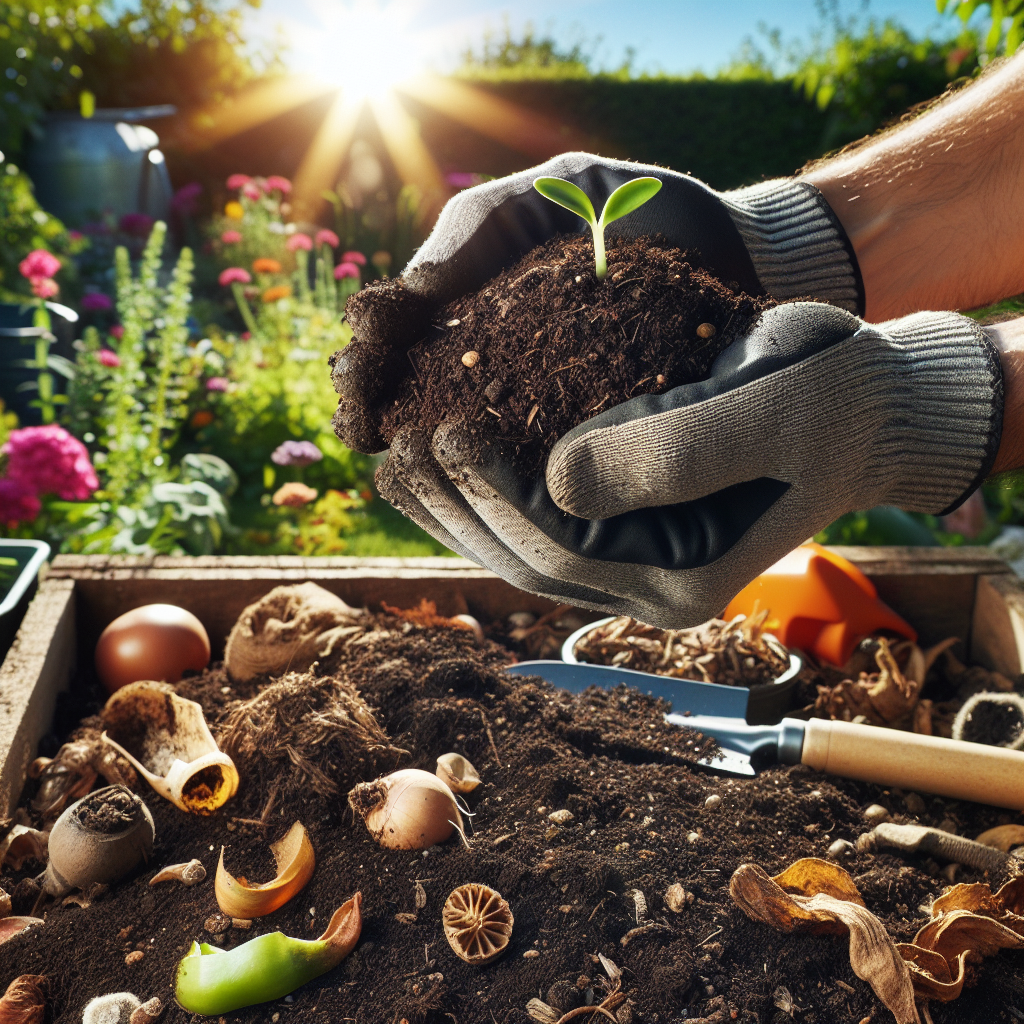Tips for Improving the Soil Quality in Your Garden
As any seasoned gardener knows, healthy soil is the cornerstone of a thriving garden. With the right balance of nutrients, structure, and microorganisms, your garden can flourish, providing lush greenery, vibrant flowers, and bountiful harvests. However, improving soil quality isn’t a one-and-done job—it’s an ongoing journey. Let’s dig deep into the methods that can help bolster the vitality of your garden soil, ensuring your green space remains a source of pride and joy.
Understanding Your Soil: A Key Step for Improvement
Before you can begin improving your soil, it’s necessary to understand its current condition. Soil tests are a great starting point, revealing pH levels and nutrient statuses, such as nitrogen, phosphorus, and potassium content. Kits for soil testing can be purchased at local garden centers or online, or you could get a more detailed analysis by sending a sample to a local cooperative extension office.
- Link to purchase a soil test kit: Soil Test Kit on Amazon
Once you have your results, the path to soil improvement becomes clearer. For instance, soils with low pH are too acidic and may benefit from the application of lime to raise the pH. Conversely, soils with high pH might require sulfur to lower it. The proper pH ensures nutrient availability and root health for your plants.
Organic Matter: The Lifeblood of Your Soil
Organic matter, like compost, is a fantastic way to improve soil texture and fertility. Compost adds essential nutrients and beneficial microorganisms, improving drainage in clay soils and water-holding capacity in sandy soils.
Home composting is also an excellent way to recycle kitchen scraps and yard waste, turning it into “black gold” for your garden. If you don’t have the space or resources to compost at home, you can purchase bagged compost from garden centers. Just be sure to choose well-rotted, weed-free compost to prevent any garden headaches.
- Link to high-quality compost: Organic Plant Magic Compressed Organic Potting-Soil
Cover Crops: Nature’s Blanket for Soil
Also known as “green manure,” cover crops such as clover, winter rye, or legumes can bolster soil health. Planted during off-seasons, these crops protect against erosion, suppress weeds, and improve soil structure upon their breakdown.
After the growing season, simply cut these crops down and dig them into the soil. As they decompose, they release organic matter and nutrients. For an effortless soil improvement trick, this method is particularly effective and low-maintenance.
Amendments for Specific Needs
Depending on the type of soil and what you’re hoping to grow, certain amendments can be beneficial. For example, if you’re working with heavy clay soil, adding coarse sand and gypsum can improve drainage and prevent compaction. For sandy soils, on the other hand, peat moss or coconut coir might be the ticket to improved water retention.
Remember to add amendments gradually and test soil regularly to avoid over-correcting.
The Role of Mulching in Soil Health
Mulch is not just for curb appeal; it plays a vital role in soil health by reducing water loss, keeping roots cool and moist, and adding organic matter as it breaks down. Organic mulches like straw, bark, or shredded leaves are preferable as they feed the soil as they decompose.
Avoiding Soil Compaction: A Tread Lightly Approach
Foot traffic and heavy equipment can compact soil, which squelches its ability to hold air and water—both vital for root growth and health. Creating permanent walkways and using raised beds can prevent compaction, ensuring roots can spread out unhampered in their quest for nutrients.
Adding Minerals for a Nutrient Boost
If soil tests reveal a deficiency in certain minerals, you can add organic mineral supplements, such as rock phosphate for phosphorus or greensand for potassium. These natural products release nutrients slowly, enhancing soil without the risk of burns associated with chemical fertilizers.
Encouraging a Thriving Soil Ecosystem
Soil isn’t just dirt; it’s a living ecosystem. Encouraging earthworms and beneficial microbes by avoiding chemical pesticides and fertilizers helps maintain a dynamic soil biology. Moreover, worm castings are a valuable, nutrient-dense addition to the soil.
Consistency: The Key to Long-Term Soil Health
Improving soil is not a onetime task; it’s a continuous cycle of assessment, amendment, and cultivation. Regularly adding organic material and observing plant health will guide your efforts. And remember, sometimes soil needs a rest, too. Crop rotation and fallow periods can allow it to recover and reduce disease and pest pressures.
In conclusion, regular assessment and mindful care can transform your garden’s soil into a bountiful, nurturing environment. The result is stronger, healthier plants and a garden that becomes a self-sustaining ecosystem. With these tips in hand, you’re well on your way to becoming a steward of your slice of earth, ensuring both beauty and yield for years to come.
For further reading and to enhance your soil savvy, visit reputable sources like the United States Department of Agriculture’s Natural Resources Conversation Service or the Royal Horticultural Society for detailed guides and gardening advice. Your garden’s success starts from the ground up—so why not give it the foundational support it needs to thrive?


